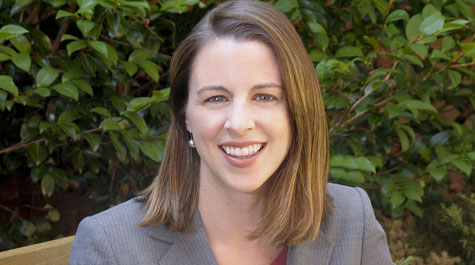Professor Allison Orr Larsen's Work Featured in The New York Times
William & Mary Law School Professor Allison Orr Larsen’s law review article “Perpetual Dissents” was recently highlighted in The New York Times. Columnist Adam Liptak relied on research from Larsen’s article for his feature about the dissenting practices of Supreme Court justices.
Larsen coined the phrase “perpetual dissent” to describe a Supreme Court Justice repeating a prior dissenting view when an issue arises a second time rather than applying the controlling precedent. “In her study,” Liptak wrote, “Professor Larsen found that every member of the court led by Chief Justice William H. Rehnquist from 1986 to 2005 had issued perpetual dissents. But she was unable to find a pattern in what she called a rampant but inconsistent practice. The intensity of a justice’s commitment to a position did not seem to explain the issuance of such dissents. Nor did the freshness of the precedent at issue, or how closely divided the justices were. The dissents were, instead, often simply an attempt to remain internally consistent.”
“I was very happy to discuss my work with Mr. Liptak,” said Larsen, “and I hope his article raises awareness of an issue I have always found fascinating.”
“Perpetual Dissents” was published by the George Mason Law Review in 2008. “Though much has been written on the value of dissent generally and on the Court's allegiance (or lack thereof) to the rule of stare decisis,” Larsen wrote, “few have stopped to ponder the practice of continually repeating resistance to a decision even years after the decision has become law. And yet the practice should give us pause.” The article goes on to argue persuasively that perpetual dissents “must be used only rarely and always deliberately.” Under such circumstances, Larsen concluded, “perpetual dissents could become a powerful communication device. If, however, they continue to be used on a whole host of issues and without a discernible pattern, any potential value of a perpetual dissent will be stifled by its over-use, and, moreover, the institutional consequences of such a heavy practice could be cause for alarm.”
Professor Larsen received her undergraduate degree, magna cum laude, from the College of William & Mary and then attended the University of Virginia Law School where she graduated first in her class and served on the Managing Board of the Virginia Law Review. She clerked for Judge J. Harvie Wilkinson on the U.S. Court of Appeals for the Fourth Circuit and Justice David Souter on the U.S. Supreme Court.
She was a Research Fellow with the University of Virginia Law School before joining the appellate litigation practice of O'Melveny & Myers, LLP, where she focused on civil, criminal, and civil rights litigation. Before joining the William & Mary faculty, Larsen was a Visiting Assistant Professor and Scholar in Residence with the Columbus Law School at Catholic University. Her research interests include administrative law, constitutional law, and the institutional and informational dynamics of legal decision-making.
